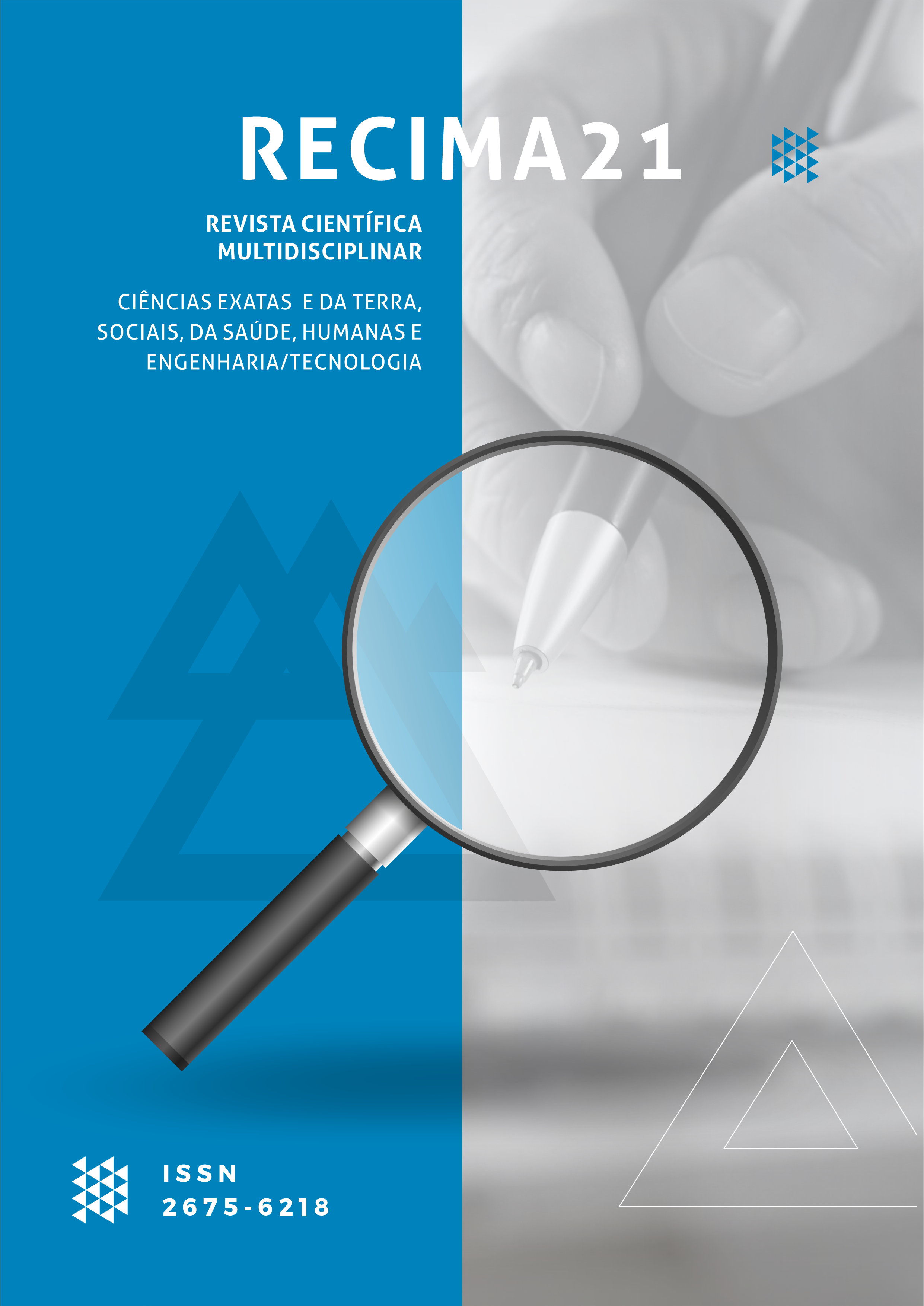GENE SILENCING THERAPY IN HUNTINGTON'S DISEASE: INTEGRATIVE LITERATURE REVIEW
DOI:
https://doi.org/10.47820/recima21.v3i1.1052Keywords:
Huntington Disease, Gene Silencing, TreatmentAbstract
Huntington's disease (HD) is a genetic disease that affects the Central Nervous System, which is a progressive degenerative disease that triggers involuntary movements, called choreiform disorders, as well as cognitive impairment and behavioral changes in the patient. The objective of this study was to analyze the scientific evidence about the treatments that are used in patients with Huntington's disease, emphasizing the productions that present the current and promising therapies, discussing the effectiveness of the therapy used. The present study was developed through an integrative literature review (ILR) in online databases, carried out between August and November 2021. The search for the literatures was carried out according to the PICo strategy. The study of the data obtained was mediated according to the themes addressed by the works acquired throughout the literature search. At the end of the filtering, performed according to the established exclusion and inclusion criteria, 11 publications were obtained, present in different journals and converging with the study objective. Three thematic categories were formed, dealing with treatments using RNAi; Catalytic Nucleic Acids and CRISPR Technology; and Antisense Oligonucleotides. Thus, it can be stated that Huntington's disease, even though there is no cure, there are treatments that can slow the progression of symptoms, as well as progressive neurodegeneration.
Downloads
References
Doença de Huntington: o que é preciso saber. ABH: Associação Brasil Huntington. 2016. Disponível em https://abh.org.br/perguntas-frequentes. Acesso em: 12 nov. 2021.
AJITKUMAR, A.; JESUS, O. Huntington Disease. StatPearls Publishing, jan. 2021. Disponível em: https://www.ncbi.nlm.nih.gov/books/NBK559166/. Acesso em: 12 nov. 2021.
BASHIR, H. Emerging therapies in Huntington’s disease. Expert review of neurotherapeutics, v. 19, n. 10, p. 983-995, 2019.
BATES, G. P. et al. Huntington disease. Nature reviews Disease primers, v. 1, n. 1, p. 1-21, 2015.
CHEN, G. et al. Modulation of Nuclear REST by Alternative Splicing: A Potential Therapeutic Target for Huntington’s Disease. Journal of Cellular and Molecular Medicine. v. 20, n. 10, p. 1-11, 2017.
DASH, D.; MESTRE, T. Therapeutic Update on Huntington’s Disease: Symptomatic Treatments and Emerging Disease-Modifying Therapies. The American Society for Experimental Neurotherapeutics, v. 17, n. 1, p. 1645-1659, 2020.
FIELDS, E. et al. Gene Targeting Techniques for Huntington’s Disease. Ageing Research Reviews. v. 70, p. 1-8, 2021.
GODINHO, B. M. D. C. et al. Delivering a disease-modifying treatment for Huntington's disease. Drug discovery today, v. 20, n. 1, p. 50-64, 2015.
IQUBAL, A. et al. Gene Therapy, A Novel Therapeutic Tool for Neurological Disorders: Current Progress, Challenges and Future Prospective. Current Gene Therapy. v. 20, n. 3, p. 184-194, 2020.
KAMEL, N. et al. Evolutionary Design and Experimental Evaluation of Selective Hammerhead Ribozymes. 2020 IEEE 20th International Conference on Bioinformatics and Bioengineering (BIBE). IEEE, 2020.
KARIMIAN, A. et al. CRISPR/ CAS9 Novel Therapeutic Road for the Treatment of Neurodegenerative Diseases. Life Sciences, v. 259, n. 1, p. 1-9, 2020.
KEISER, M. S. et al. Gene suppression strategies for dominantly inherited neurodegenerative diseases: lessons from Huntington's disease and spinocerebellar ataxia. Human molecular genetics, v. 25, n. 1, p. 53-64, 2016.
LANE, R. et al. Translating Antisense Technology into a Treatment for Huntingtin’s Disease. Springer Nature, v. 1780, n. 1, p. 497-523, 2018.
PARK, S. V. et al. Catalytic RNA, ribozyme, and its applications in synthetic biology. Biotechnology advances, v. 37, n. 8, p. 107452, 2019.
PAULSEN, J. S. et al. Cognitive and behavioral changes in Huntington disease before diagnosis. Handbook of clinical neurology, v. 144, p. 69-91, 2017.
SPRONCK, E. A. et al. AAV5-miHTT gene therapy demonstrates sustained huntingtin lowering and functional improvement in Huntington disease mouse models. Molecular Therapy-Methods & Clinical Development, v. 13, p. 334-343, 2019.
WYANT, K.; RIDDER, A.; DAYALU, P. Huntington’s Disease – Update on Treatments. Current Neurology and Neuroscience Reports. v. 17, n. 33, p. 1-11, 2017.
ZHANG, N. et al. DNAzyme Cleavage of CAG Repeat RNA in Polyglutamine Diseases. Neurotherapeutics, v. 18, n. 3, p. 1710-1728, 2021.
Downloads
Published
Issue
Section
Categories
License
Copyright (c) 2022 RECIMA21 - Revista Científica Multidisciplinar - ISSN 2675-6218

This work is licensed under a Creative Commons Attribution 4.0 International License.
Os direitos autorais dos artigos/resenhas/TCCs publicados pertecem à revista RECIMA21, e seguem o padrão Creative Commons (CC BY 4.0), permitindo a cópia ou reprodução, desde que cite a fonte e respeite os direitos dos autores e contenham menção aos mesmos nos créditos. Toda e qualquer obra publicada na revista, seu conteúdo é de responsabilidade dos autores, cabendo a RECIMA21 apenas ser o veículo de divulgação, seguindo os padrões nacionais e internacionais de publicação.













